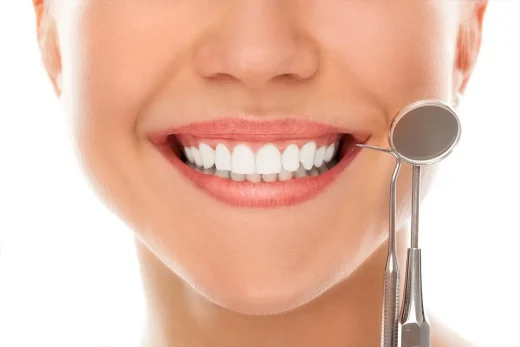Hyperdontia (or hyperodontia) means too many teeth; permanent teeth of individuals in this case is more than 32 teeth. Tooth structure and more than 20 teeth in the milk tooth.
What is Hyperdontia?
Hyperdontia is an excess of teeth occur in the form of multiple or double structures, twin teeth, fusion or adhesion. Fusions or adhesions may later appear as a single large tooth. Double formations are from fusions of adjacent teeth in the cementum or dentistry, respectively. When a tooth fuses with a supernumerary tooth, it is called gemination. Most of the time, these formations occur in the anterior region. It is which leads to aesthetic problems.
Hyperdontia may be present, especially in the cleft palate, cleft jaw, or cleft lips. Deciduous dentitionhyperdontia occurs quite rarely, and then mainly the upper jaw. In most cases, it contains additional incisors. Persistent hyperdontia is more common. Supernatural teeth can have a natural tooth shape. In this case they are called eumorphic. On the other hand, if their shape is atypical, they are called dysmorphic. These include paramolar, distomolar, and mesiodentes, respectively. The mesiodentes is usually in the shape of a cone. It is located between the roots of the upper central incisors. This can interfere with the natural eruption of the teeth. Paramolar and distomolar are molars that can form behind the wisdom teeth and between the molars.
All About Hyperdontia?
The cause of hyperdontia is not fully understood. But division of dental germs, overproduction of the dental arch, atavism, or local developmental abnormalities may be responsible. Sometimes hyperdontia runs in families or with other diseases such as Klippel-Feil syndrome and dysostosis (bone formation disorder). The following forms can be distinguished in hyperdontia:
Mesiodentes
It is the most common form of dental hyperdentis, which usually runs in families. Mesiodentes are teeth that are usually atypically shaped and often appear due to overproduction of the dental arch. They are peg-like or cone-like or flat-crowned dowel teeth. The root is normally fully formed and does not divide. Inflammatory processes or pain rarely occur. Mesiodentes appeared in only a quarter of cases.
Paramolar
Additional, single-rooted teeth mainly in the upper jaw. Paramolars often form moles and also a palatal tubercle. Paramolar and distomolar are nail-shaped teeth that can fuse with molars, usually in the root area. Early extraction is necessary for orthodontic reasons and because of the increased risk.
Dystomolar Teeth
Extra teeth grow behind the wisdom teeth. Distomolars are supernumerary teeth usually found in upper jaw. They are like oral cavity wisdom teeth, which is usually in the jawbone.

Cleidocranial Dysplasia
Multiple supernumerary dental systems occur here. Typically here is a defect of the clavicles.
Non-specific Hyperdontia
The permanent tooth is broken without losing the primary tooth.
Hyperdontia: symptoms, complaints and signs
In the context of hyperdontia, cysts may occur, as well as, in rare cases, It is possible rooting or disruption of adjacent teeth. Different proportions of mandible or maxillary size, as well as an eruption occlusion, may be symptoms. Sometimes there may also be localized crowding of teeth or the formation of an unusually enlarged jaw segment. Normal biting or chewing is not possible due to hyperdontia. In addition, asymmetries such as crossbites can occur and inflamed dirt niches can easily develop. Hyperdontia is not always immediately recognized; It is usually indicated with defects in the eruption of permanent teeth, but radiological examination or pain also lead to the discovery of a large number of teeth. The radiological image of the upper jaw is mainly used for explanation; In complex cases, a teleradiograph lateral view can also be used for diagnosis.
Treatment and Therapy
As part of treatment, supernumerary teeth in the maxilla are usually removed if hypertonicity is present, otherwise a shift in the midline may occur. However, a normally formed supernumerary incisor is often not noticed and may therefore be left in place if the supernumerary tooth does not cause tooth crowding. Normally, the mesiodens is also removed, otherwise a gap may form between the upper central incisors. Teeth should be extracted as early as possible to close a gap. If there are already damaged teeth near the supernumerary tooth, removal is also recommended.
After part of the active treatment period, a holding phase is usually followed so that a gap-free row of teeth and a stable bite can be maintained. Plastic splints, removable tools or tongue retainers, which must be worn for at least a year, are suitable for this purpose. Removal treatment usually begins around the age of ten. It should be noted that extraction also affects aesthetics or soft tissue profile. Treatment is much more complicated if the dental anomaly is caused by a genetic disease.
For getting more information about hyperdontia and anything about dental problems, please visit Erdem Dental to learn more.
Frequently Asked Questions
- Is hyperdontia serious?
Literally, hyperdontia is not painful or risky. It is possible to have swelling or discomfort and esthetic worries.
- What causes hyperdontia?
The answer is not clear for that. It is mostly accepted that the reason is congenital.
- Does hyperdontia go away?
In some cases, mostly the treatment is not needed. Your doctor may recommend extra care though.